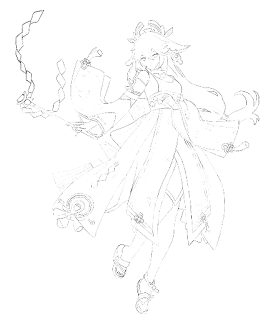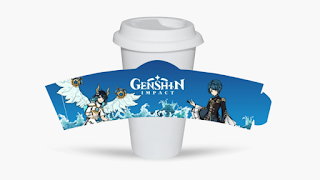05/02/2024 - 25/03/2024 / Week 1 - Week 8
Adriena Tan Yan Zi / 0351236
Intercultural
Design / Bachelor of Design (Hons) in Creative Media
Final Compilation
& Reflection
Lectures
01 Culture & Design
Culture and design are inseparable,
and as future designers, you need to be able to understand and express both as
part of your creative skills development. Visuals are powerful persuasive
medium to provide most of our information about the world.
Why do visual graphics exist? Why do they look the way they do?
1. Everything that can be seen
This definition is wide, all-inclusive
including nature - BUT NATURE IS NOT CULTURE - unless there’s meaning and
representation attached to it
2. Everything produced or created by humans that can be seen
This
proposes that the visual is everything that can be seen and which is produced
or created by humans for the purpose of visual representations that has
functions, content and communicative purpose.
You are able to identify the social, cultural & political sphere where
the design elements reside.
By understanding the significance of the graphics in its cultural studies,
philosophy, sociology and origin history.
Cultural Sensitivity Awareness
1. Symbolism and Imagery: Certain symbols and images may carry
different meanings in different cultures.
2. Color Considerations:
Colors can have cultural significance, and their meanings may vary across
different societies.
3. Typography and Language: Choosing fonts and text styles that are
culturally appropriate is important.
Addressing Cultural Sensitivity
1. Inclusive Design: Designers should strive to create products and
experiences that are accessible and inclusive for people from various
cultural backgrounds, including those with different abilities and needs.
2. User Research: Conducting thorough user research, including
ethnographic studies and user testing across diverse groups, helps designers
gain insights into cultural preferences and behaviors.
3. Localization: Adapting designs to specific cultural contexts
through localization can enhance the relevance and acceptance of a product
or service.
4. Cultural Awareness Training: Design teams may benefit from
cultural awareness training to develop a deeper understanding of diverse
perspectives and sensitivities.
Instructions
PROJECT 1: Proposal
Description:
A proposal to concretise ideas, supported by
research, for a final design revolving a given theme that reflects students’
understanding and interpretation of global issues and design aesthetics.
Requirements:
- The general theme is “Cultural Sensitivity in
Design”
- You are to study a cultural phenomenon, or a particular
subculture that is perceived as ‘sensitive’, and “frame” your study within the
chosen theme.
- You are to convey this cultural aspect without
altering the actual facts but within a presentable interpretation and
adaptation that raises awareness from the viewers.
- Produce some
preliminary ideas on how to visually express your interpretation using design
language. Each idea is to be supported by a short rationale. Conduct visual
research to help expand your idea generation
Submission: Our assignment entails crafting a proposal consisting of a
200-word write-up, complemented by visual aids and research materials in a
PowerPoint presentation. We have the flexibility to choose between presenting
one topic with three sketches or three topics with one sketch for each.
Following the creation of the presentation, we will record a group
presentation video, summarizing our proposal and concluding our Project 1
submission.
Prelimilnary Research and Brainstroming
After the first physical lecture, we formed a group and went home. Later on,
we got into a group meeting to discuss and brainstorm what ideas that everyone
would agree on. We gather everyone's previous ideas and researched materials
on the topics that the lecturers had informed us to prepare the week before so
that finalising on the main topic wouldn't face too much hindrance. Every
teammate takes turn to propose their researched topic before everyone settled
down to vote for the potential topics.
Voting for the compiled topics
I opened a voting pole for all of us to vote for 3 ideas each member to to
come down with the main 3 ideas to further develop our research on. In the end
we came down to 3 main ideas which is
Idea 1: Cultural sensitivity in game design,
Idea 6: Inaccurate Cultural Representation in Genshin Impact and
Idea 8: Cultural Symbolism of Dragon.
Research Materials
Idea 1:
Idea 6:
Idea 8:
Initial sketches
For Raiden Shogen, I extended the front part of her kimono which was
initially above her thigh high socks. I also added a piece of frilly cloth
to cover her cleavage which was very obvious with her low neckline kimono.
The added cloth gives her more freedom to move around while still allowing
her to pull out her weapon from her chest.
For Xingqiu, it was quite straightforward, I just extended his booty shorts
to a straight pants which i feel would suit his role and his gender better,
make him seem less girly.
For Yae Miko, much like the Raiden one, Cheng Yue extended the front part
of her dress to cover up her thighs. Other than that, she also rise up the
side sleeves so that her side chest wouldn't be half out anymore.
To conserve Venti's role as an archon, we decided not to change too much.
Cheng Yue added a mesh cloth to the belly and also gave him sleeves to his
top.
Final presentation slide
Final Presentation Video
PROJECT 2: Data Collection
Description: Students will conduct a data gathering collection process
about the culture with relevance to the theme and your research objectives.
Requirements:
- The students are required to collect visual,
oral, textual and tactile artefacts that would be part of their research
materials for the ideation in Project 1 (proposal).
- All collected
artefacts and materials must be recorded, kept and documented, accompanied by
necessary information such as the type of artefact and material, its purpose,
its symbolism, its cultural/historical background, and more, depending on the
kind of artefact and material.
- Data Collection Methods Some of
the methods by which you can collect data:
• Observation study.
•
Interview of relevant stakeholders (from the lecture series, you may approach
any of the guest speakers for an interview, if you deem their presentation
useful for further research).
• Online and/or actual physical material*
visual research of the selected culture (the
people/arts/symbols/architecture/text/calligraphy etc.)
Submission: We are to compile the collected field studies data
into a slide accompanying with description and additional information. As well
as proves of the collected google drive to submit to conclude the submission
Project 2.
Resketching and colouring the characters
For the resketching and colouring before presenting to our interviewers and
attaching to the google form, Cheng Yue and I both resketched and recoloured
the character with similar colour palette as the original outfit and character
design.
Collecting data with Survey
Targeted Professional Respondents
Insta accounts:
Screenshots of proof
Data collected slide
FINAL PROJECT: Visual Design
Our final is that we would be putting the redesigned characters as wishing
banner as well as on a collaboration merchandise (cup sleeves
collateral).
Role Delegation for the last task:
Complete splash art for 4 characters
Venti:
- Sketching & Line art = Cheryl
- Colouring =
Elysa
- Rendering = Zi Qi
Xinqiu:
- Sketching & Line art = Adriena
-
Colouring = Adriena
- Rendering = Zi Qi
Raiden & Yae Miko:
- Sketching & Line art = Elysa
*
Colouring = Zi Qi
* Rendering = Zi Qi
Collateral:
- Done by Han & Wan Qing
Revised sketch (based on feedbacks)




Lineart and base colouring splashart
In this part, Cheng Yue and I both took Xingqiu and Venti each before
passing it to Zi Qi for rendering. Elyssa also helped do the sketching and
base colour for Yae Miko and Raiden shogen before passing it to Ziqi for
rendering.
Final Redesign Character Splashart
Cup sleeves
This part were actually handled by Thanaphorn and Wanqing as they needed
to design collateral cup sleeves for the collaboration. They were asked to
design a background that would be fitting for both the male characters,
Venti and Xingqiu.
Exploring cup sleeve designs
Final Cup sleeves design
Final cupsleeve poster
Han and I came up with an idea to make a poster to showcase the cupsleeve
design and and redesign outfit more.
Final Submission
Final cup sleeve design #1
Final cup sleeve design #2
Final cupsleeve poster
Final Raiden Shogen Banner Design
Final Raiden Shogen Banner Design
Final designs compilation.pdf
Final project google drive link:
Feedback
Week 5
We had the opportunity to consult Mr. Charles regarding our ideas and
collected data. Initially, there was confusion about the research objective,
but after further explanation, he approved of our idea and approach to the
research. He emphasized the importance of ensuring our research questions and
findings were genuine to yield accurate results. Mr. Charles cautioned that
not all Genshin players might initially agree with the idea, but suggested
that if our research could demonstrate its impact in addressing the issue, it
would still be valuable. Overall, he expressed satisfaction with the
redesigned outfit sketches and recommended seeking additional feedback and
perspectives on our idea.
Week 6
We presented our progress and interview responses to Mr. Charles. He expressed
satisfaction with the diverse methods we employed to gather data, particularly
highlighting the value of professional feedback on our sketches. He concurred
that the questions and responses appeared unbiased. We informed him of our
intention to modify the sketches based on the received feedback, to which he
approved certain adjustments but questioned the necessity of changes to some
aspects. We endeavored to find a compromise in response. In the end, he's
satisfied with our progress and gave us the greenlight to continue our project
within the given time limit.
Reflection
Throughout this project, we initially experienced smooth sailing, with
effective delegation, excellent communication, and clear understanding of
tasks among the team members. However, as we progressed, we encountered
the beginning of a challenging phase. The professionals we reached out to
during our field study weeks were unresponsive for a period of two weeks,
setting us behind schedule. Additionally, we faced delays in securing
interviewees. Later on, we entrusted the task of completing our official
character design to the artists in our group, but they began working on it
much later than anticipated. This resulted in last-minute requests for
assistance from the rest of us, leading to a rush to contribute to the
line art and base color. Overall, as we approached the end of the project,
it became increasingly hectic. Reflecting on these challenges, I am
beginning to consider the notion that relying solely on oneself may be
more dependable than depending on others.












































Comments
Post a Comment